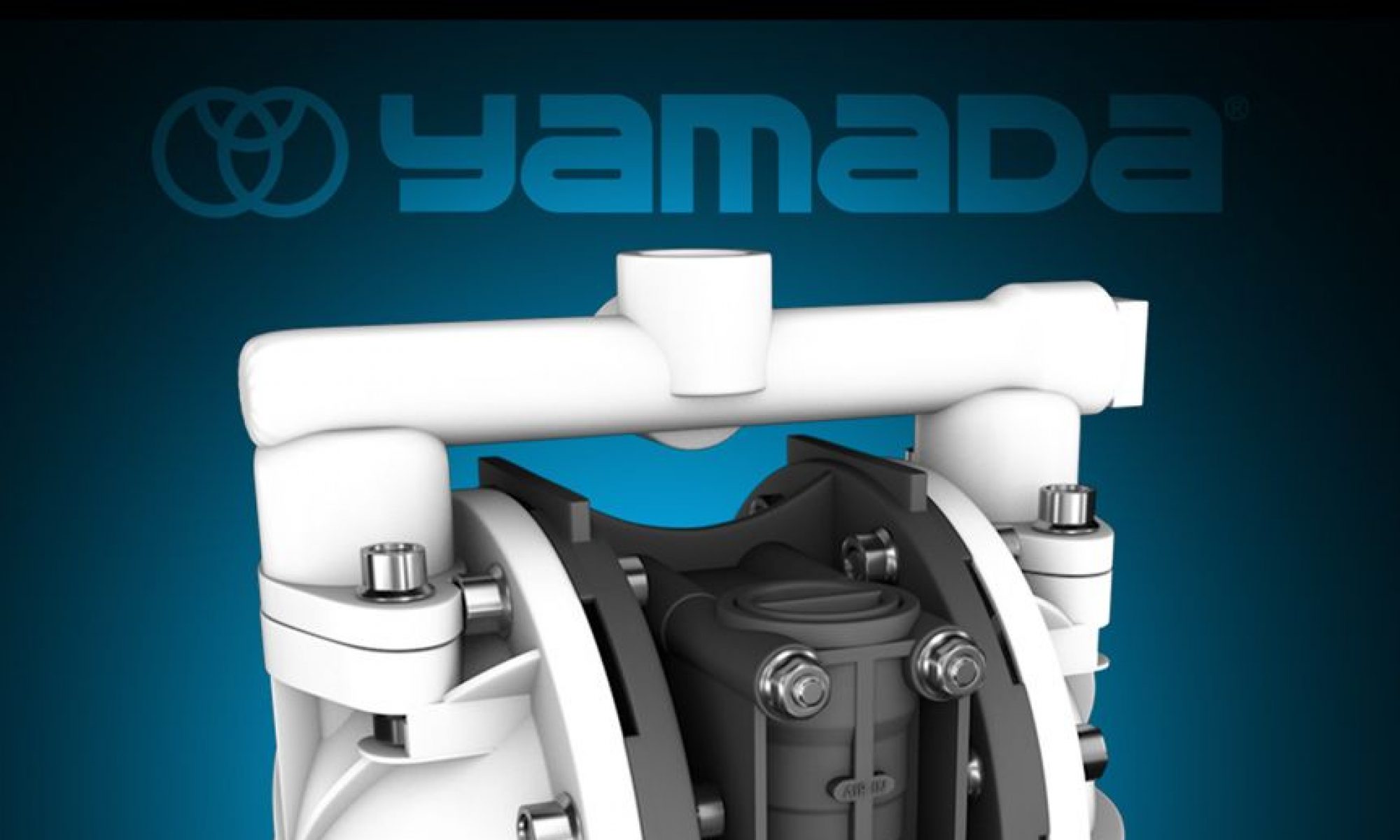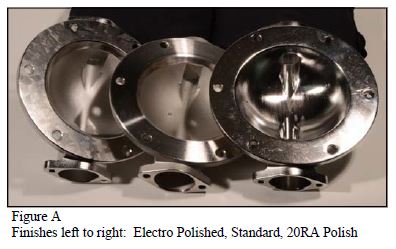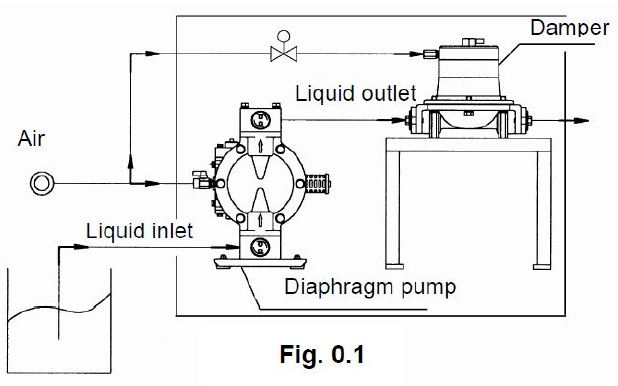In addition to our standard product line, Yamada offers a variety of surface finishes for our stainless steel pumps. These finishes are primarily used for food, pharmaceutical and high purity applications. Our FDA Series of pumps come with an electro-polished finish (reference figure A).
The process involves immersing the part in an acid bath, then an electric current is introduced to help pull out the in the stainless steel, removing surface contamination and leaving the part with a shiny finish.
Additionally, Yamada can also mechanically polish any stainless steel pump that is 1” of size or smaller. This process helps to remove the porosity from the stainless steel. Parts can be polished to either a 20 RA finish (180# grit) or a 10 RA finish (320# grit). The 20 RA finish is typically used in the food and pharmaceutical
industries; whereas the 10 RA finish is primarily used for semiconductor applications. Yamada pumps that are considered electro-polished are first mechanically polished.
Terms:
- Electro-polished – acid dip with electrical
- Passivated – acid dip, no current applied
- Mechanically polished – uses mechanical action to remove porosity from surface
- 20 RA finish (180# grit) – food and pharmaceutical
- 10 RA finish (320# grit) – semiconductor


